10 areas on your roof to be aware of

By Pacific West Roofing.
Maintenance is key to having a healthy and safe roof, so make sure these specific areas get a bit of special attention!
The roof above your head is key to keeping your home warm and dry and the occupants happy and healthy. Without the correct maintenance, roofs can cause major structural damage to the house and danger to those inside. But keeping up with this maintenance can be uniquely difficult with roofs. Unlike other features of the home, such as the porch or the doors, the roof is simply harder to keep an eye on.
That’s why there are experts like ours at Pacific West Roofing who help homeowners stay on top of their roof maintenance. From inspecting and repairing to installing and maintaining, Pacific West Roofing has been working with residential and commercial roofs made of various materials since the 1980s. With that history of knowledge, we’ve put together a short list of the most commonly vulnerable places on your roof that require specific maintenance.
1 - Trim branches
We all love trees, but trees that are too close to a house can cause damage to the roof. Branches that extend over a roof can scratch the roof each time the wind blows lifting, breaking or even removing shingles. They also become a direct source of debris that can clog gutters. Trees are beautiful, but put some space between them and your home. If you have trees with overhanging branches, have them trimmed and be on the lookout for newly sprouted branches each year.
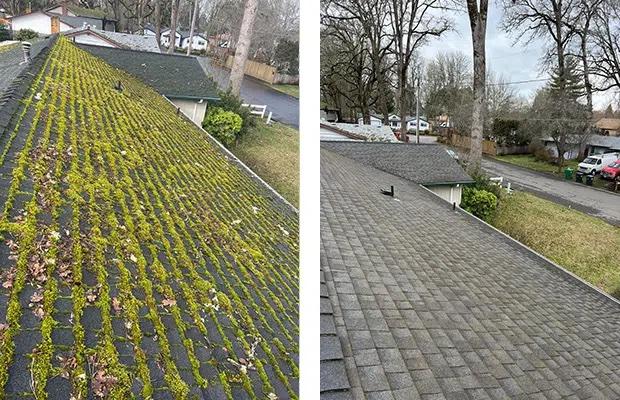
2 - Remove moss
Moss makes a regular appearance in our damp Pacific Northwest climate. It looks great in a forest, but not so nice on a roof. Moss doesn’t just sit on top of the roof it grows between shingles where it can eventually lift the shingles away from the roof. That allows water to seep inside and rot the wood. A good preventative is to sprinkle zinc sulfate granules across the roof each year to inhibit moss growth. But if you do look up and see a carpet of green, call in experts to clean your roof and remove the moss.
3 - Clean off debris
Regular roof cleaning can go a long way in extending the life of your roof. Leaves and fir cones in the fall, layers of pollen in the spring and twigs and branches after any storm can all end up on your roof. A leaf blower or a broom might do the trick for do-it-yourselfers, but sometimes a bit more scrubbing may be involved and professionals should be consulted.
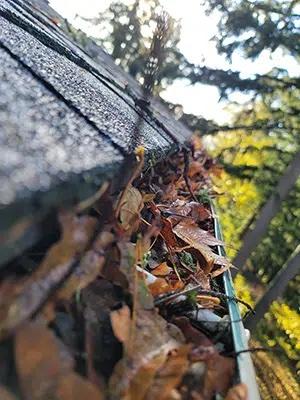 4 - Clear the gutters
4 - Clear the gutters
Clearing gutters is a chore homeowners may choose as a do-it-yourself project and it’s an important part of roof maintenance. Gutters that become blocked by leaves and other debris don’t allow rainwater or ice melt to run properly from your roof. The blockage will begin to decompose and eventually rot leaving a prime location for mold to grow and thrive. Not only will growing mold turn your gutters and likely a bit of your home’s exterior black, mold can cause health issues if it seeps its way inside. Another risk of not doing regular gutter clearing is that the rainwater will overflow and can soak through your shingles causing damage to them and increasing the chance of leaks. If you like hauling out the ladders and examining what’s hiding in the gutters, it is a job you can carefully do, but you can always leave it to the experts.
5 - Prevent ice dams
If your roof isn’t properly ventilated and insulated you run the risk of ice dams forming after a heavy snowfall. If warm air is escaping the attic it will melt the snow. As the snow melt moves to colder parts of the roof, like towards your gutters, it refreezes forming ice dams that prevent melting snow from draining off the roof. If an ice dam forms in the gutter it will weigh down the gutter eventually causing it to break away from the roof. A water backup behind the ice dam can become a leak into your attic. Ice dams can be visible from the ground so take a walk around after heavy snow and check your roof for signs of frozen ridges. If you see any, call a professional to get rid of the dam and inspect your attic ventilation and insulation.
6 - Inspect for attic leaks
Take a walk through your attic and look for signs of leaks like staining, mold and mildew on the plywood roof deck or rotting wood. Any of these are a sign there is a roof leak that needs to be addressed.
7 - Ensure ventilation is working
Ventilation in an attic provides a place for the warm, moist air that forms in your house and rises to the highest point, to escape through an exhaust vent or fan. Without proper ventilation, that heat and moisture have nowhere to go and begin to encourage the growth of mold and mildew. Attic ventilation should be part of a regular roof maintenance plan to ensure vents are working correctly and not damaged.
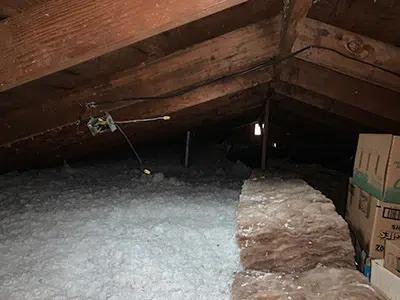
8 - Check insulation
Roof insulation helps prevent both heat loss and heat gain within the attic and really within your entire home. Whether glass wool sheets or blown-in loose fill, insulation is an essential part of a roof installation as it can significantly decrease the energy demands of a home’s HVAC system. If your energy bills seem to be rising, if you spot patches of melted snow on your roof after a snowfall or if you inspect your attic and find insulation missing, damaged or starting to fall, it’s likely time to have some insulation repaired or added.
9 - Inspect shingles
Shingles, no matter what type you have, are what protect your roof from weather. A regular part of roof maintenance should be to look at your shingles from the ground. The easiest problem to spot is missing shingles or ones that have become loose. A closer look from the roof will be needed to identify lifting or damaged shingles, damaged flashing, missing fasteners or piles of granules that have come off of the shingles.
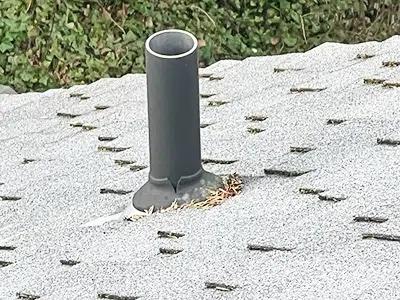
10 - Check flashing
Along the edges of your roof and any roof additions like chimneys, vents or skylights, there are thin strips of metal called flashing. Flashing diverts water away from those edges where shingles can’t quite cover the space. Overtime flashing can rust, crack, lift or separate leaving areas for water to seep through the roof. A visual inspection of the flashing will show if the flashing needs to be replaced to block out the water. Either way, regular inspection and maintenance of sealant is an essential component to extending the life of your roof.
There are several ways that homeowners can inspect and maintain their roofs, but we recommend at least an annual if not seasonal roof inspection be conducted by a professional whose trained eye can spot even the smallest of problems that left untreated could damage your roof. Plus roofing contractors follow strict safety protocols and have lots of experience climbing ladders, setting up fall protection and walking on roofs. Why risk a fall when you don’t have to?
Original article source: Pacific West Roofing
Disclaimer: The information provided on AskARoofer.com or information sent by emails is the opinion of the writers. It is the responsibility of the reader to check for accuracy in one's own jurisdiction, as there are different codes and restrictions for different parts of the country. AskARoofer.com does not accept any liability for the use of information on this website or email. AskARoofer.com has no controls over product failures, installation or climate conditions that may change the roofing process in your area. Our information is in general to our area and cannot be the same as your local town or state. It is advised to seek the local Building Department, Licensed Contractor and local Product Representative for proper installation requirements and code enforcement when installing a new roof.
Learn more about Pacific West Roofing, LLC in their Coffee Shop Directory or visit www.pacificwestroofing.com.
About Pacific West Roofing, LLC
Since 1980, Pacific West Roofing has focused on developing a reputation of excellence in roofing. As a Portland, Oregon roofing contactor, we not only provide new roof installations we also provide roof repair and roof maintenance. Our installation crews are well-trained in a multitude of roofing products and pleasant to work with on the job site. Our office staff is professional, courteous and ready to serve your needs. For more visit www.pacificwestroofing.com.






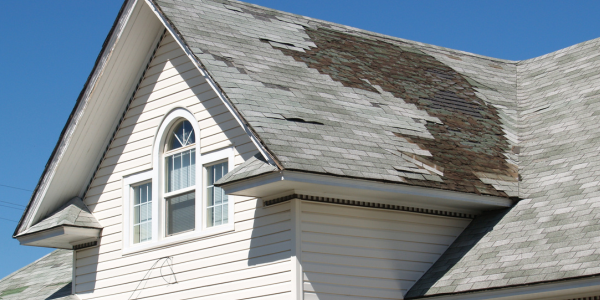






Comments
Leave a Reply
Have an account? Login to leave a comment!
Sign In